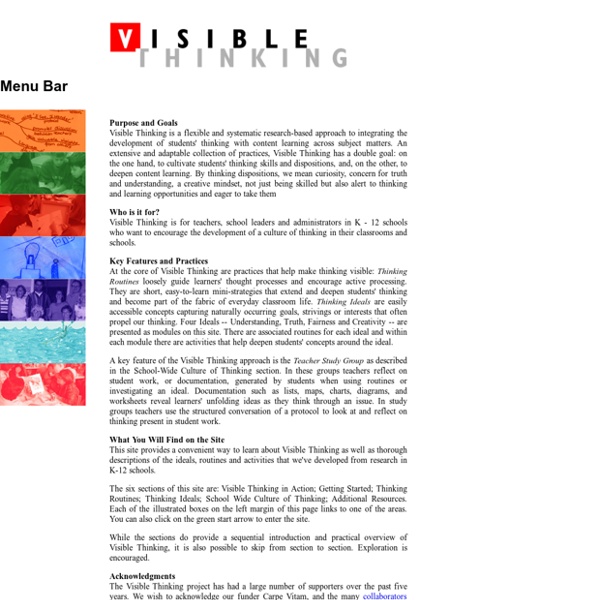Literacy Collaborative at The Ohio State University: Acquiring Second-Languages through Constructivist and Communicative Approaches in Literacy Collaborative Schools
By: Shelly Schaub, K-2 Literacy Collaborative Trainer English Language Learner (ELL) populations are growing at fast rate in most school districts across the United States. Projections suggest that “language minority students (those who speak a language other than English at home and who have varying levels of proficiency in English) will comprise over 40 percent of elementary and secondary students by 2030 (Thomas & Collier, 2001). Many questions are being asked about how to meet the needs of ELL students in classroom literacy blocks. The purpose of this article is to link the constructivist approach of the Literacy Collaborative framework for literacy instruction to the communicative/constructivist approaches to second-language acquisition.
Why Students Forget—and What You Can Do About It
Teachers have long known that rote memorization can lead to a superficial grasp of material that is quickly forgotten. But new research in the field of neuroscience is starting to shed light on the ways that brains are wired to forget—highlighting the importance of strategies to retain knowledge and make learning stick. In a recent article published in the journal Neuron, neurobiologists Blake Richards and Paul Frankland challenge the predominant view of memory, which holds that forgetting is a process of loss—the gradual washing away of critical information despite our best efforts to retain it. According to Richards and Frankland, the goal of memory is not just to store information accurately but to “optimize decision-making” in chaotic, quickly changing environments. In this model of cognition, forgetting is an evolutionary strategy, a purposeful process that runs in the background of memory, evaluating and discarding information that doesn’t promote the survival of the species.
Visible Thinking
Purpose: What kind of thinking does this routine encourage? The routine helps students make connections between new ideas and prior knowledge. It also encourages them to take stock of ongoing questions, puzzles and difficulties as they reflect on what they are learning. Application: When and Where can it be used? The natural place to use the Connect-Extend-Challenge routine is after students have learned something new.
Attribution Theory
Attribution theory provides an important method for examining and understanding motivation in academic settings. It examines individuals' beliefs about why certain events occur and correlates those beliefs to subsequent motivation. The basic premise of this theory is that people want to understand their environments and, therefore, strive to understand why certain events happen. In the classroom, the understanding students have about the causes of past events influences their ability to control what happens to them in the future. For example, if students fail a test, they will probably attribute that failure to a specific cause, such as (1) lack of ability, (2) lack of effort, or (3) poor instruction. The selected attribution will affect their subsequent motivation to engage in similar learning activities.
Trauma Training for Educators – Communities In Schools Of Central Texas
Click the red “PLAY” icon below to view the training video. Scroll down for facilitator resources and information about the training. Be sure to read the important notice below for best accessibility of the video.
What is learning? Exploring theory, product and process
Photo by Antenna on Unsplash Contents: introduction · what do people think learning is? · learning as a product · learning as a process · experience · reflective thinking · making connections · committing and acting · task-conscious or acquisition learning, and learning-conscious or formalized learning · the behaviourist orientation to learning · the cognitive orientation to learning · the humanistic orientation to learning · the social/situational orientation to learning · the constructivist/social constructivist orientation to learning · further reading · references · how to cite this article
Social Interaction Design Primer II: 2. Action Systems
We need an action system for our content/information system. Action systems traditionally belong to interaction designers, and they tend to describe actions that are constrained and enabled by the user interface, as well as back-end architecture, features, and functionality. Action systems conventionally hew pretty closely to visual design languages, and there are many standard and conventional systems (including pattern languages) around for user behavior around UI elements, such as pulldowns, lists, multiple selection windows, form pages, wizards, and so on. Action systems describe the user interaction with what is on the screen, and with what the user’s (inter)action does: search > results; submit > preview; mouse over > popup, and so on. The screen can only display so much, so once a user begins to interact, her actions result in new content, windows, screens and so on.
edutopia
Teaching students basic knowledge about the brain’s potential can have a positive impact on their motivation, grit, and achievement. In particular, explicitly teaching them that learning changes the structure and function of their brains can be transformational in building a stronger belief in the value of working hard to master new material. Teachers who explain these findings report that the knowledge has a positive effect on students’ perceptions of their abilities as well as on their expectations for success.
IB Unit Planners / 2nd Grade
Skip to Main Content Select a School... Select a School District Home School Sites +
Natural Born Learners : A tribute to Roland Meighan: Contributor to the Natural Born Learners reader.
It is with great sadness that we learned about the passing of Personalized Education Now, founder and autonomy in education advocate, Dr. Roland Meighan. I had the honour of interviewing this inspiring gentleman and was thrilled that he consented to be included in the reader Natural Born Learners: Unschooling and Autonomy in Education.
edutopia
I lost my first student to suicide not long ago. The student was no longer in my class at the time, nor even at the school, but I was flooded with the expected surge of feelings: overwhelming sadness, periodic despair, compulsive frame-by-frame replays of our every interaction. I felt the loss deeply.



